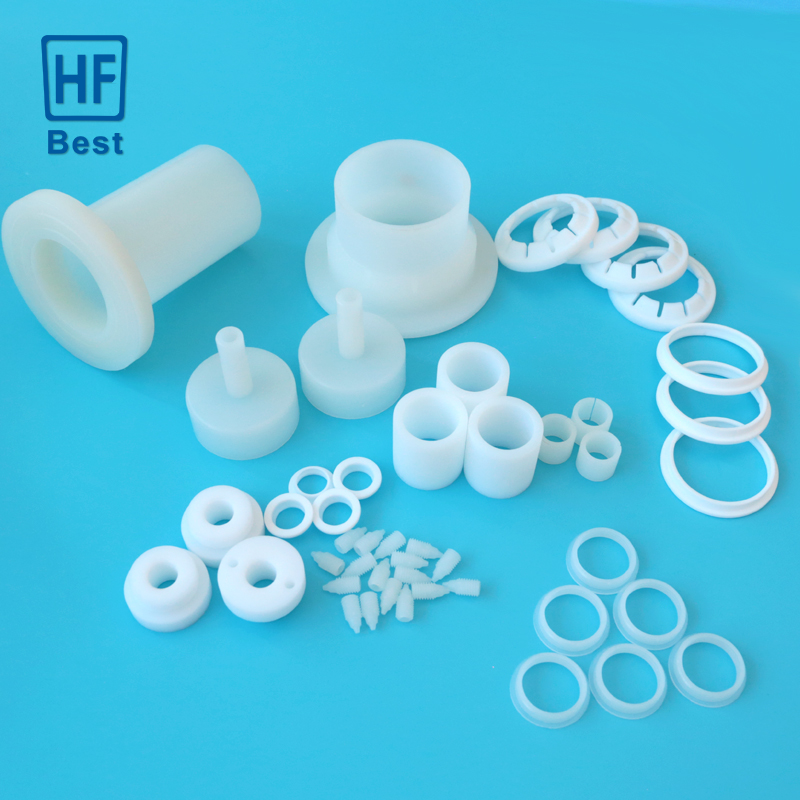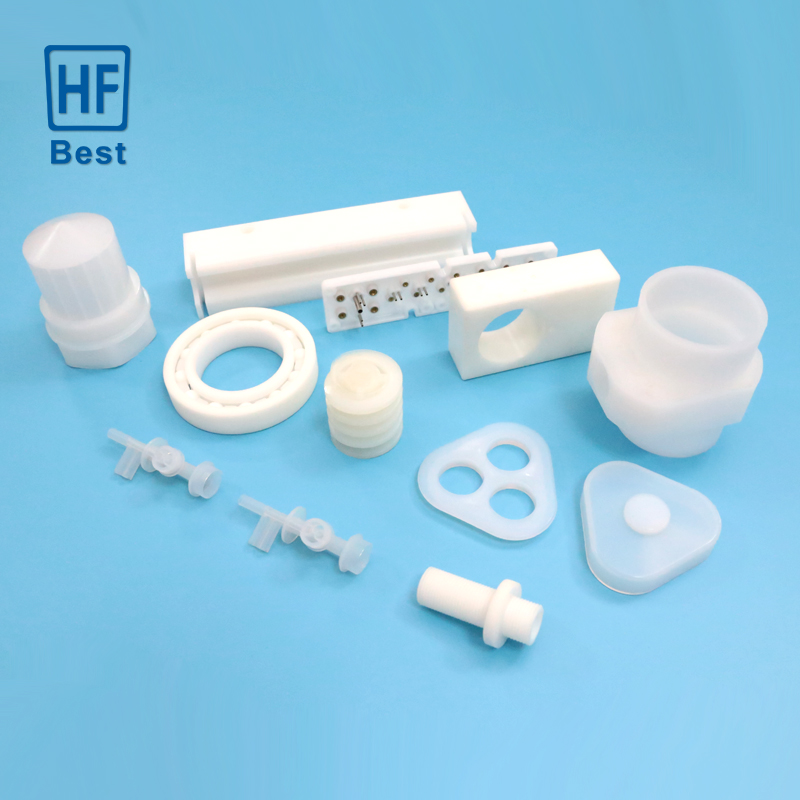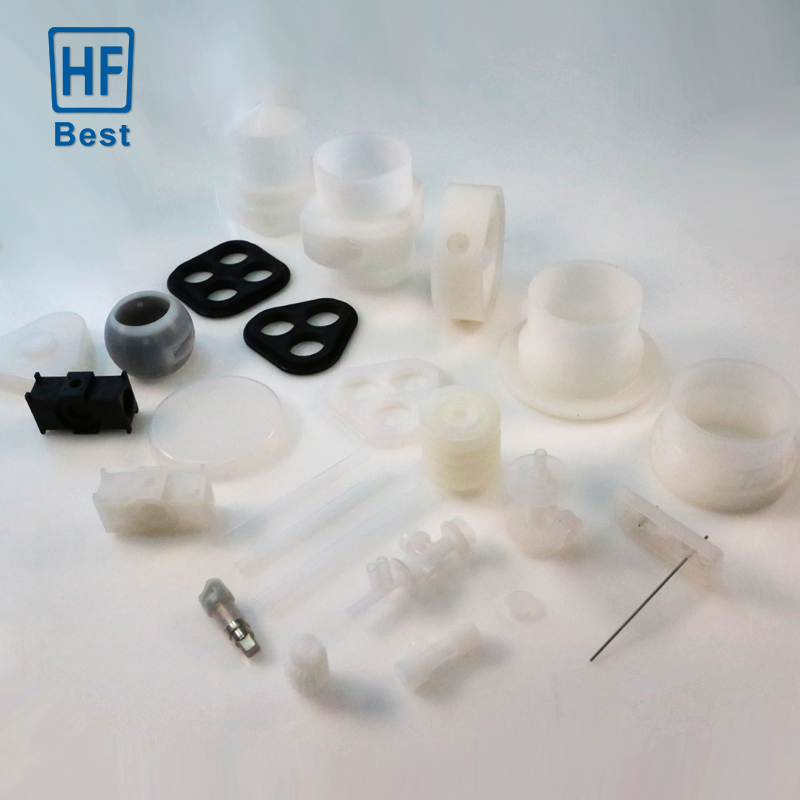News
- Industry news
Industry news
Plastic science - fluorine plastic processing
Characteristics of fluorine plastic processing
1. Thermal performance
Fluorine plastics have inflammability and excellent heat resistance. The continuous use temperature of PTFE and PFA can reach 260 ° C, and it can be used at 300 ° C for a short time. FEP is used at temperatures 60 ° C lower than they are. PCTFE can be used up to 120 ° C. Fluoroplastics such as long-term use at high temperatures will cause crystallinity changes, especially when manufacturing equipment lining.
2. Drug resistance
Fluorine plastics have excellent drug resistance and solvent resistance, especially PTFE, PFA, FEP, etc., acid, alkali, solvent are not etched on them. But molten alkali metals, fluorine, trifluorofluorocarbons have different degrees of influence on them. PCTFE, ETFE, PVDF, etc., are slightly less resistant to drugs in fluoroplastics, but the corrosion resistance is still much better than that of other plastics.
3. Electrical properties
The electrical properties of fluorine plastics, especially the high-frequency electrical properties, are difficult to match other materials. The polarity of PTFE, FEP and PFA molecules is very low, the change is very small in a wide temperature and frequency range, the relative dielectric constant is stable, the dielectric loss is very low, and the electrical insulation is excellent. PVDF also has specific piezoelectric and pyroelectric properties, which can be used to manufacture piezoelectric materials.
4. Mechanical properties
The tensile strength of fluorine plastics increases with the increase of hydrogen and chlorine atoms. PTFE and PCTFE have extremely low embrittlement temperatures, showing excellent low temperature properties. PTFE has the lowest coefficient of friction and exceptional self-lubricity.
However, PTFE has its own shortcomings such as high wear and cold flow. Various fillers can be used to improve wear resistance and overcome cold flow.
5. Non-sticky
Fluorine plastics have special non-stickiness. In particular, the fluorine content of PTPE, FEP, PFA and other molecules is high, and the surface contact Angle is very large, so that the liquid on the surface of fluorine plastic products becomes spherical, which is not easy to bond with resin, so it is often used to make non-stick creep layer on the surface of cookware.
6. Weather resistance
All varieties of fluorine plastics have excellent weather resistance, even in the harsh temperature of long-term exposure, its various properties have not significantly changed.
7. Hydrophobic
Fluorine plastics have low water absorption, especially PTFE, and their hydrophobicity can be used to make permeable composite fabrics and other equipment.

Common molding and processing methods of fluorine plastics
1. Sintering molding
The sintering molding of fluorine plastics includes the preforming step, that is, PTFE resin is pressed into a pre-finished product with a certain shape in a normal temperature and pressure environment, and the pre-finished product is heated to the melting point of the resin so that the resin particles are dense, and the resin particles are gathered into a strong uniform structure, which is a process called sintering, and then the finished product is cooled and crystallized, and the crystallinity depends on the cooling speed.
2. Scraping molding
The cylindrical fluoroplastic material is mounted on a rotating lathe and then a sharp cutting tool is used to peel off a thin layer of constant thickness to produce films and sheets, generally 25 um to 3 mm thick.
3. Plunger extrusion molding
The fluorine plastic powder is sent into the pipeline, compacted with the indenter, and the raw material is compacted and transported to the extruder by the rotation of the screw or the reciprocating push of the plunger, uniform heating, continuous extrusion and cooling to form a variety of pipe and rod products.

Precautions for the design of fluorine plastic injection parts
1. The wall thickness should be as uniform as possible, and the release slope should be large enough.
2. The transition part should be gradually and smoothly transitioned to prevent sharp corners. Sharp edge generation, especially plastic products must not have gaps.
3. The gate and runner should be as wide and short as possible, and the gate position should be set according to the shrinkage condensation process, and the cooling well should be added if necessary.
4. The surface of fluorine plastic injection parts should be smooth and clean with low roughness; .
5. The exhaust holes and grooves must be sufficient to discharge the air and the gases in the melt in time.

Fluoroplastic processing needs attention
1. Crystalline material, small moisture absorption. It can be processed into products by the usual thermoplastic processing methods.
2. Poor fluidity, easy to decompose, decomposition of corrosive gas. It should be strictly controlled that the molding temperature should not exceed 475 degrees, the mold should be heated to 150-200 degrees, and the gating system should have little resistance to the material flow.
3. Translucent granules, injection molding, extrusion molding. Molding temperature 350-400 degrees, 475 degrees above easy to cause discoloration or bubbles. And note that demoulding can be difficult.
4. Specific gravity: 2.13-2.167g/cm ³ molding shrinkage :3.1-7.7%
5. because the molten material has a corrosive effect on the metal, long-term production, the mold needs chrome plating treatment.






